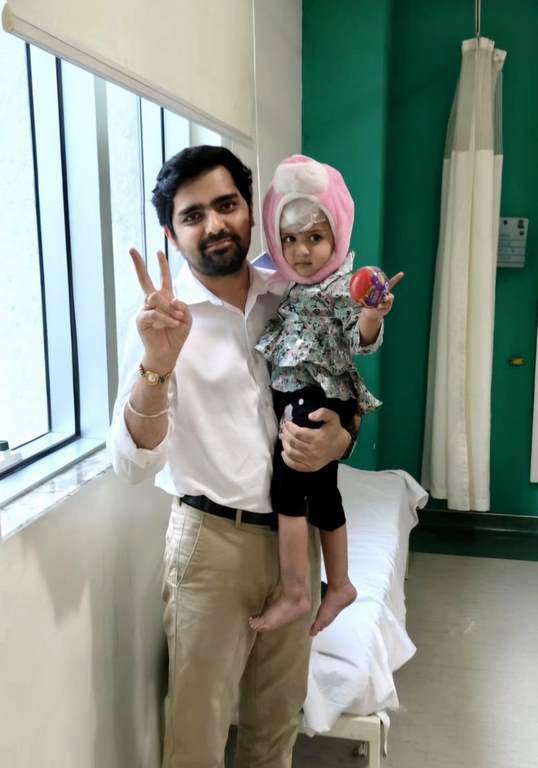PUNE: 1-year-9-month-old Anushree was rushed to Manipal Hospital, Kharadi, after falling from the second floor of her home. Due to the severe fall, she suffered a severe head and femur injury and lost consciousness.
She presented with a range of critical symptoms, including seizures, drowsiness, and unequal pupils, which indicated a potentially life-threatening brain injury. Suspecting a brain herniation and internal bleeding, the team of doctors led by Dr. Parth Dalal, consultant Pediatric Intensivist, started emergency protocols right away to lower the intracranial pressure (ICP) in her skull and stabilize her condition. A quick CT scan was performed, which confirmed the presence of a left-sided subdural hemorrhage (SDH) and signs of brain herniation.
After diagnosing her condition, doctors performed a craniectomy (brain surgery) to relieve pressure and prevent future brain injury. During the procedure, a large blood clot was removed, and a section of the skull was temporarily removed to allow the brain to enlarge safely without increasing intracranial pressure. After ensuring stability in her intracranial pressure, she underwent orthopedic surgery for a femur fracture, a flexible rod was placed for fracture stabilization, which will be removed in the follow-up procedure.
Anushree was taken to the High Dependency Unit (HDU), where she continued to receive intensive care, including physiotherapy and feeding. She began showing signs of neurological improvement, including recovering consciousness, following orders, and improving motor function. She could open her eyes, recognize her parents, and respond appropriately.
Speaking about the case, Dr. Parth Dalal, consultant Pediatric Intensivist, at Manipal Hospital, Kharadi, Pune, said, “The forced hit on the ground caused brain herniation and subdural hemorrhage on the left side of the brain. In such cases, there’s a pressure created from within the skull that pushes against the brain’s tissues and can lead to paralysis, decreased breathing, and even death. While performing the craniectomy, we removed a large blood clot to release the intracranial pressure. Despite her frequent seizures and hemodynamic instability, with constant observation in the ICU, medication, and therapy, her condition eventually stabilized, including electrolyte control and breathing support. She was discharged after 9 days of hospital stay. While her condition improves, we observe her closely to ensure her steady recovery.”
A multidisciplinary team of pediatric intensivists, neurosurgeons, orthopedicians, anaesthesiologists, nursing staff, and physiotherapists responded quickly, saving Anushree’s life and facilitating her miraculous recovery.
Admission Date of Patient: 9th June 2024
Discharge Date of Patient: 17th June 2024

